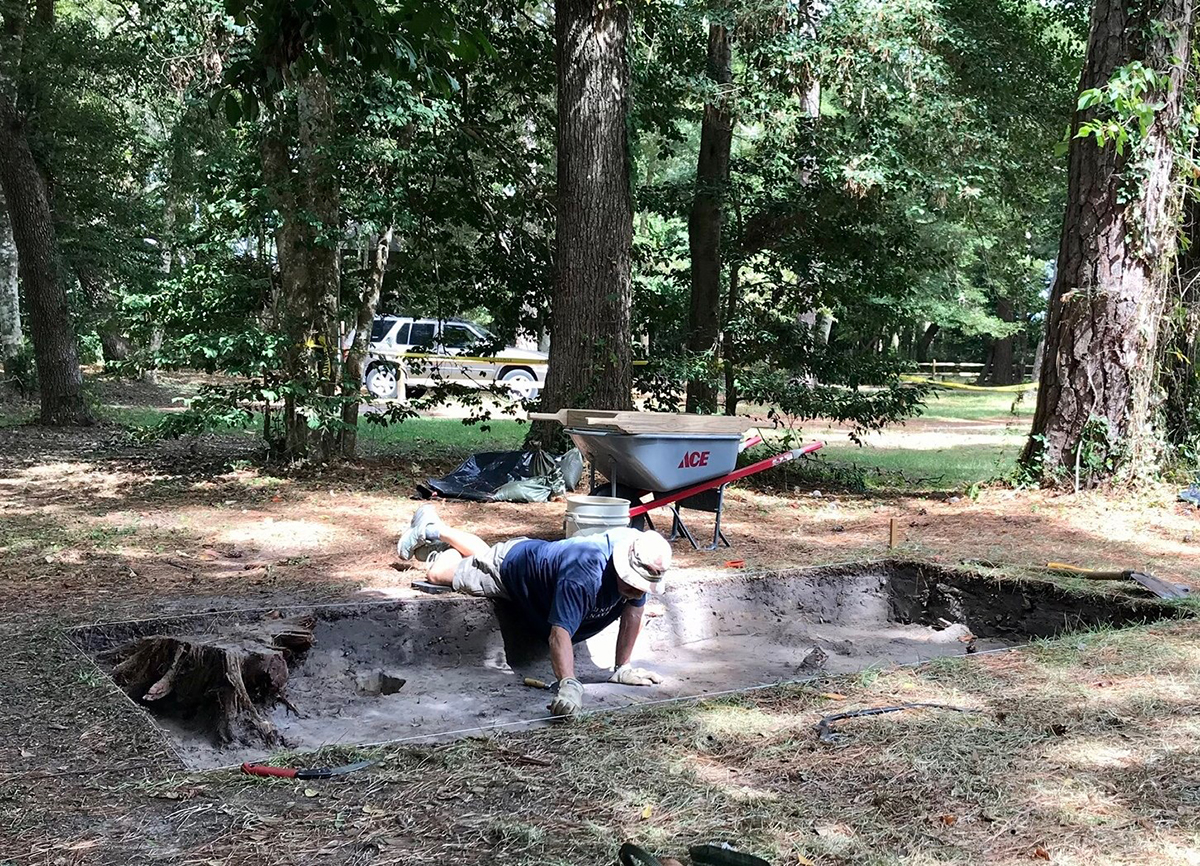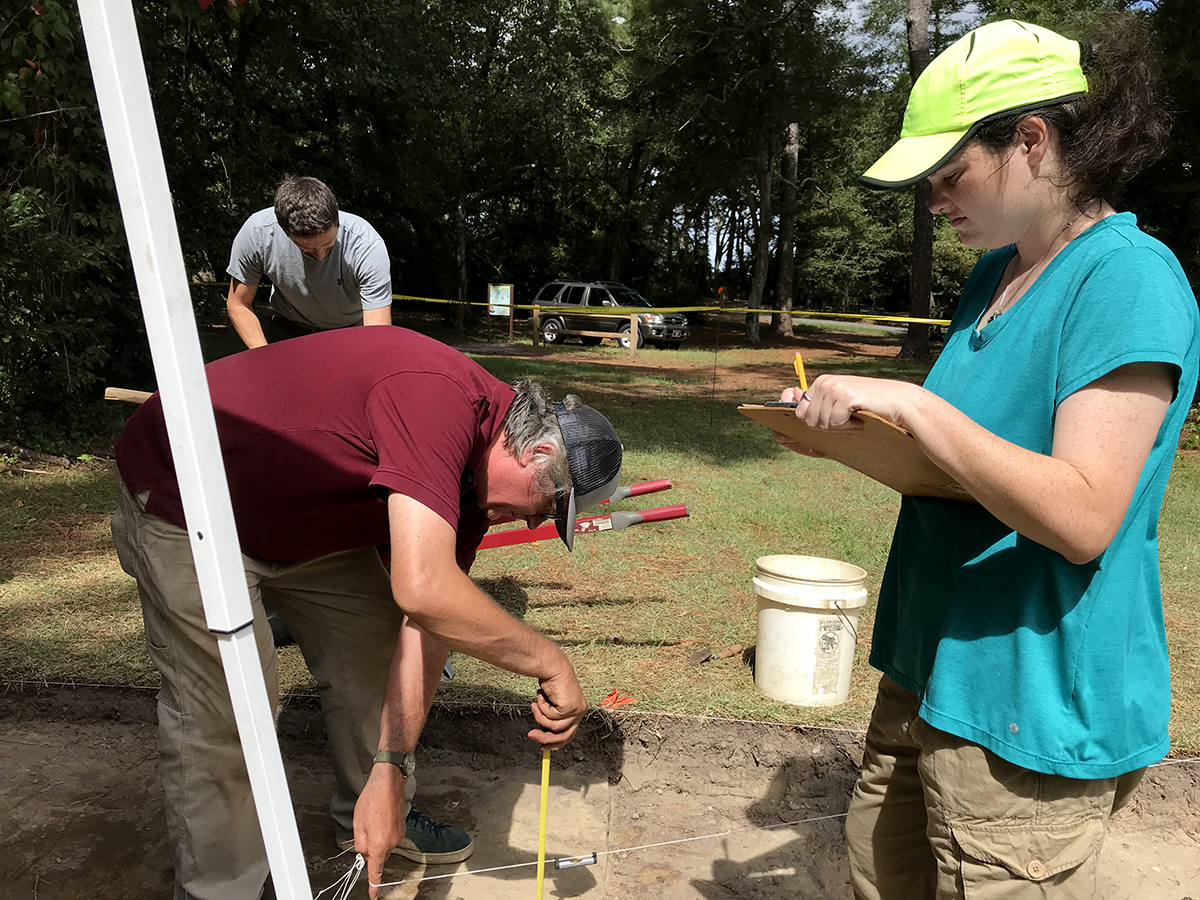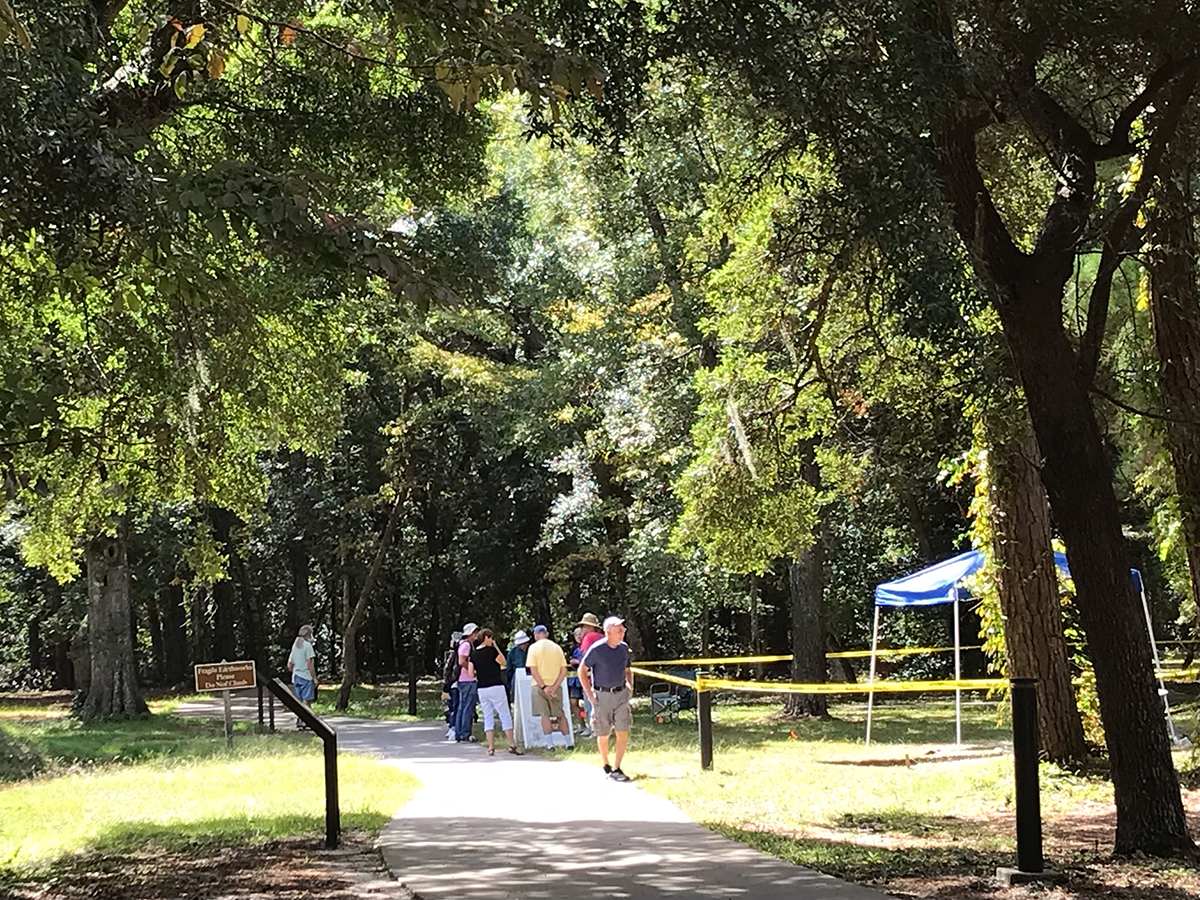
ROANOKE ISLAND — Archaeologists this week unearthed further evidence of late 16th century English activity near reconstructed earthworks at the Fort Raleigh National Historic Site, although the discoveries — mostly fragments and shadows in dirt layers — are incremental details that will inform the First Colony Foundation’s meticulous effort to reconstruct a significant science laboratory discovered decades ago.
“It’s an untangling of the evidence from all these excavations,” Eric Klingelhofer, foundation co-director, explained Wednesday while taking a break under the trees within the roped-off dig area.
Supporter Spotlight
The dig, held Sept 15-24, was conducted as part of the foundation’s partnership with the National Park Service. The Archaeological Resources Protection Act permit is for one year, allowing for flexibility if the team needs to return for additional work.
So far, artifacts found in the current dig include sherds from Iberian olive jars that were commonly found on ships in the 1600s, a gun flint and a piece of what may be part of the assay equipment used in the laboratory.
In earlier digs by the park service, the original location of the earthworks, which today look like a square of grass-covered walls, was determined and later rebuilt. But it appears most likely that the earthworks were not a fort, but instead a protective enclosure for a long-sought metallurgy workshop built nearby.
As part of the 1584-87 Roanoke Voyages, English explorers and soldiers came to Roanoke Island for varying periods of time, up to and including the famed “Lost Colony,” a settlement of 117 men, women and children that disappeared mysteriously after being last seen in August 1587.

In the early 1990s, Klingelhofer and fellow foundation research vice president, Nick Luccketti, worked with archaeologist Ivor Noel Hume, who died in 2017, in a project for the Virginia Company Foundation, according to the First Colony Foundation’s website. The team had found in the vicinity of the earthworks the 1585-86 laboratory of the scientist Thomas Harriot and the metallurgist Joachim Gans, who worked with copper and other materials. Further explorations nearby found evidence of charcoal making and a brick kiln, as well as 16th century English artifacts.
Supporter Spotlight
“Remember, this is a worksite,” Klingelhofer said. “No one lived here.”
In seeking to reconstruct the workshop, he said that the intent is to recreate it on paper by piecing together bits of evidence, analyzing features in the soil and comparing it to what was found in the past. A report on the work is expected to be completed by year’s end, he added.
In addition to the foundation tapping funds from donations and grants, the project, which has been delayed nearly two years because of the pandemic, has been assisted by in-kind contributions of volunteers, equipment and staff services from the park service.
“We’re looking for the exterior of things, whether it’s an enclosure fence or a ditch,” Klingelhofer explained. “Finding a ditch is good, but we want to know where it ended.”
In one of the two excavated units, located across the pathway in front of the earthworks, a large amount of disturbance was revealed, said Eric Deetz, site director and research associate with the foundation.
“We dug down deeper than the level we would expect to find (material from) the Fort Raleigh period,” he said.
As somewhat expected, the hole was filled with large pieces of asphalt with aggregate, he said.
Years before it became a national park, Deetz said that the area was had quite a bit of “F-Troop”-style commercial infrastructure that was later removed. But much work in archaeology is a process of elimination.
In addition to looking for artifacts, the mission of the dig is to follow features — “essentially, an artifact that’s not portable,” Deetz said — that are evident in the soil.
“One of the reasons we chose these two areas is because they’re areas that haven’t been excavated before,” he said, adding that work had been done previously in adjacent units.
Deetz said that additional work is planned to ground-truth anomalies detected earlier in the general area of the earthworks and to do some “shovel-testing” in a few interesting spots in the woods by the earthworks.

Even though the digs are not specifically looking for evidence of the missing 1587 settlement or members of the Lost Colony, the public, which was invited to the site by the park service via posts on social media, seems to be keenly interested, Deetz said.
“Oh my word, this has been crazy,” he said, adding he meant that in a good way. “We’ve had a lot of folks come. Some people who are here for the week have come by multiple times.”
In addition to members of the archaeology team, volunteers and park rangers have helped answer many questions from the on watchers, he said.
“So, it’s been a really good coalition,” Deetz said. “Engaging with the public is always factored in — it’s part of the whole project.”
Indeed, the number of visitors making the effort to watch people scrape and sift dirt says much about the over-the-top public fascination with the story of the Lost Colony, often called the nation’s oldest mystery.
But since the foundation was founded in 2005 by Klingelhofer, Luccketti and other professional archaeologists, the mission has been to explore the archaeology related to all the Roanoke Voyages, not just the Lost Colony.

Klingelhofer said that between him and Luccketti, who was on the team that discovered Jamestown, they have 100 years of archaeological experience.
“Everything we do is all according to the scientific methods,” Klingelhofer said. “It’s vetted by our peers and our artifacts are all examined very carefully by the specialists in North America and England.”
As to the precise location of the Lost Colony settlement — still an unsolved mystery — with some luck, the patient work involved in the glacial speed of archaeology may still pay off, Klingelhofer said.
“We look forward to using our past and continued survey work in the park to the locate the settlement and Ralph Lane’s fort, which was adjacent to the settlement,” he said. “While it’s very likely that erosion has removed portions of the site, we expect that enough remains to excavate.”







